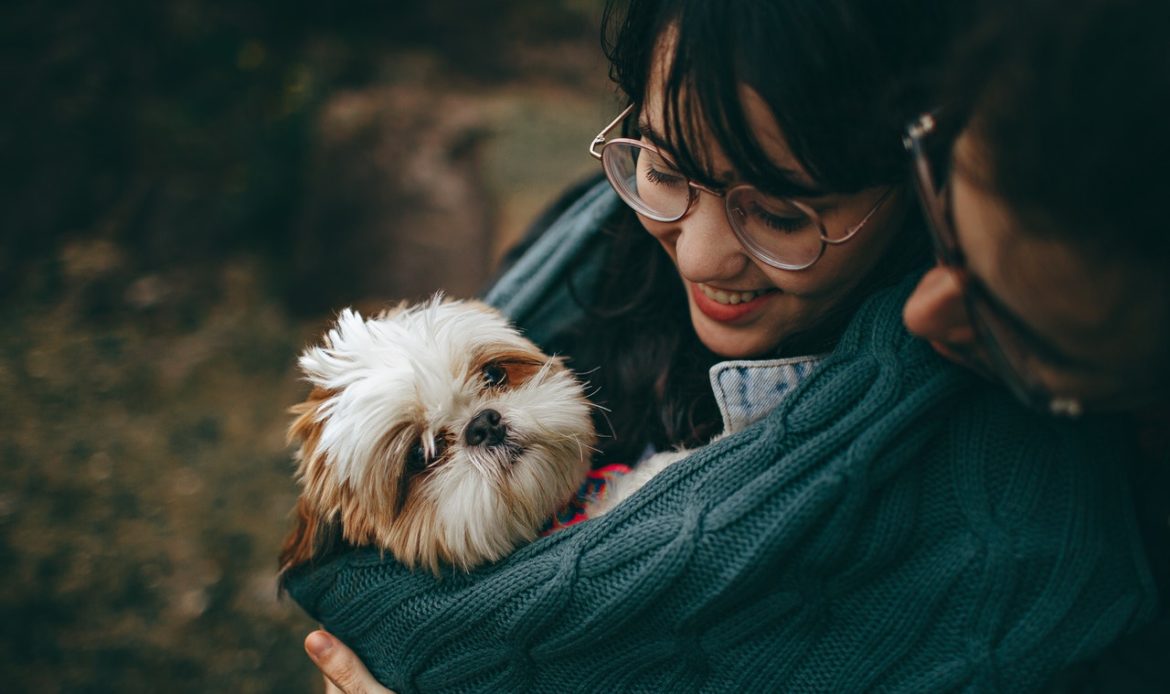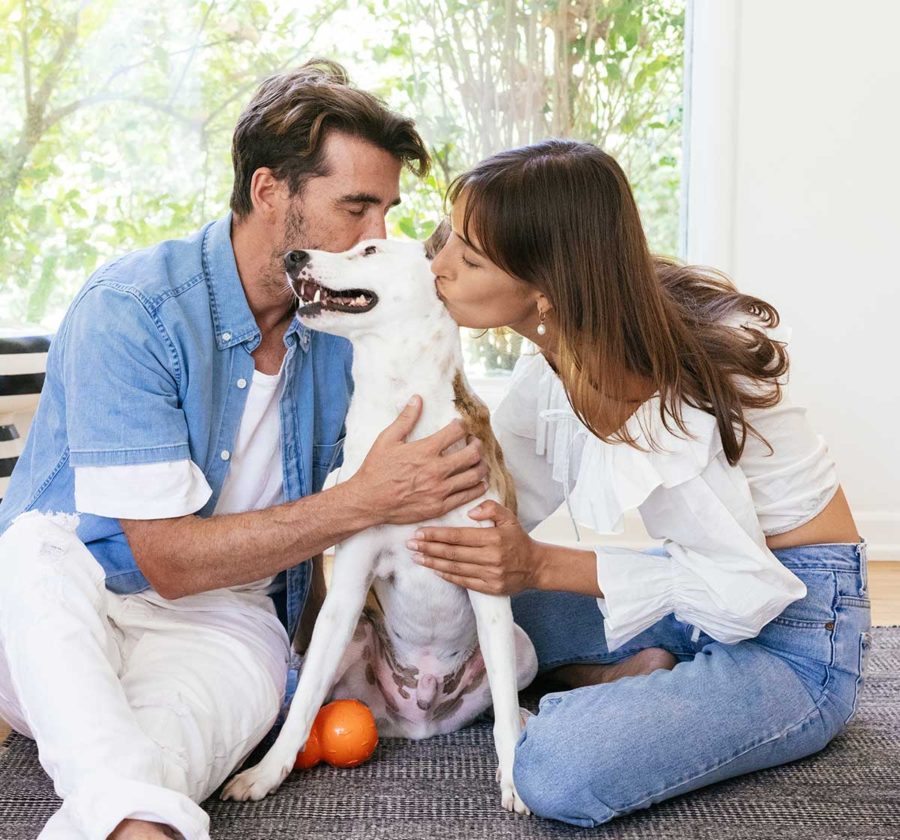Ever wonder how your dog always seems to know it’s YOU, even in a house full of people? I’ve spent countless hours watching my pup Buster zoom past everyone else just to greet me at the door, and I’ve always been curious about the magic behind this connection. It’s not just coincidence or wishful thinking – there’s real science behind how dogs recognize their owners!
Dogs use a combination of incredible senses and cognitive abilities to identify their favorite humans From their supernatural sniffing powers to their ability to read our emotions, these furry companions have multiple ways of saying, “Yep, that’s my person!”
The Amazing Ways Dogs Recognize Their Owners
1. The Power of Scent: A Dog’s Superpower
The primary way dogs identify their owners is through scent. And when I say their sense of smell is powerful, I’m not exaggerating:
- Dogs have up to 300 million olfactory receptors in their noses (compared to our measly 6 million)
- Their brains devote about 40 times more space to analyzing smells than ours do
- They can detect scents at concentrations nearly 100,000 times lower than humans can
This incredible nose allows your dog to pick up on your unique scent signature Each human has a distinct odor profile created by
- Genetics
- Diet
- Environmental factors
- Personal care products
- Hormones
Your dog essentially carries a detailed scent “fingerprint” of you in their brain This is why your pup might sniff your clothing or belongings when you’re away – they’re connecting with your scent!
As one canine behaviorist explains, “Dogs have an incredible ability to form strong emotional bonds with their owners. They rely on a combination of scent, body language, and routine to identify their owner and establish a sense of security and trust.”
2. Visual Recognition: They Know Your Face!
While scent is paramount, dogs also rely on visual cues. They’ve learned to recognize your face, body language, and even the way you move. As of May 3, 2025, research continues to show that dogs process facial features similarly to how humans do, though not quite as specialized.
Dogs pay special attention to:
- Your facial expressions
- Your height and build
- How you walk and move
- Your typical gestures and mannerisms
This visual recognition helps explain why your dog might recognize you from a distance before they can smell you!
3. The Sound of Your Voice
Dogs have exceptional hearing and can distinguish between different human voices. They learn to associate specific vocal patterns, tones, and speech patterns with their owners.
Some fascinating facts about dogs and sound recognition:
- They can detect sound frequencies at 4 times the distance humans can
- They recognize emotional tones in human speech
- They process the meaning of some words (studies show the average dog can understand about 165 words!)
4. Routine and Predictability
Dogs thrive on routine and quickly learn the patterns of their owner’s behavior. This helps them anticipate when you’ll be home, when it’s feeding time, or when you’re about to take them for a walk.
According to Matt Shipman from NC State University: “A dog can learn to recognize the sound of a specific car and anticipate the arrival of the person associated with that car (such as the dog’s owner). If you take the subway and usually get home at 5:30, the dog may be triggered by the local bus that drives by every day at 5:25.”
The Emotional Connection
Beyond physical recognition, dogs form deep emotional bonds with their owners. This connection involves:
1. Oxytocin: The Love Hormone
When you and your dog gaze into each other’s eyes, both of you experience a release of oxytocin – the same hormone that bonds mothers to their babies. This creates a powerful emotional connection that strengthens recognition.
2. Emotional Intelligence
Dogs are highly attuned to human emotions. Studies show they can:
- Detect when their owners are sad, happy, or stressed
- Distinguish between positive and negative emotions in humans
- Respond differently to their owner’s emotional states
A pet psychologist emphasizes: “Dogs communicate through body language, vocalizations, and scent. By paying attention to your dog’s cues and responding appropriately, you build a strong foundation of trust and understanding.”
3. Pack Mentality
Dogs view their human family as their pack, with their primary owner often serving as the “pack leader.” This social hierarchy helps them understand their role and relationship with different family members.
How Your Dog Picks Their Favorite Person
Ever noticed how some dogs seem to have a clear favorite person in the family? Here’s why that happens:
- Who feeds them: The person who regularly provides food often earns special status
- Who spends the most time with them: Quality time builds stronger bonds
- Who provides the most positive experiences: Training, playing, and petting create positive associations
- Early socialization: Dogs often bond strongly with whoever raised them during their critical socialization period (3-12 weeks)
- Personality match: Some dogs naturally click better with certain personality types
Can Dogs Change Their Preferred Owner?
Yes! While dogs form strong attachments, these bonds can evolve over time. If family dynamics change or if someone new starts providing more care and attention, a dog may shift their primary attachment.
This adaptability is why dogs can be successfully rehomed and form new bonds with adoptive owners, though it may take time for them to adjust and build trust with their new caregiver.
Strengthening Your Bond with Your Dog
Want to deepen your connection with your furry friend? Try these proven techniques:
- Consistent care: Be reliable with feeding, walks, and attention
- Quality time: Engage in activities your dog enjoys
- Positive reinforcement: Reward good behavior with treats, praise, and affection
- Training sessions: These build communication and trust
- Respect boundaries: Learn to read your dog’s body language and respect their comfort levels
- Establish routines: Dogs thrive on predictability and structure
As a dog trainer notes, “Consistency is key when it comes to building a strong bond with your dog. By consistently providing love, care, and positive reinforcement, you establish yourself as the leader of the pack and earn your dog’s loyalty and respect.”
Fascinating Things Your Dog Knows About You
Beyond simply recognizing you, your dog picks up on many subtle details about your life. Here are some fascinating things your dog likely knows about you:
-
Your health status: Dogs can actually smell certain diseases and health conditions, with studies showing they can detect illnesses like cancer with astonishing accuracy (98% in some studies!)
-
Your emotional state: They know when you’re sad, happy, anxious, or stressed, and will often try to comfort you when you’re feeling down
-
Your schedule: They learn your routine and can predict when you’re about to leave or return home
-
Your relationships: Dogs can sense the dynamics between you and others, including when you’re in love or when you dislike someone
-
Your intentions: They pick up on subtle cues that indicate what you’re about to do next
-
When you’re being unfair: Studies show dogs have a sense of fairness and can tell when you’re treating them differently than other dogs
Common Questions About Dog Recognition
How long does it take for a dog to recognize its owner?
Most dogs begin recognizing their owners within days of adoption, though the depth of recognition and bond strengthens over time. Puppies can begin recognizing their owners within 1-2 weeks.
Can my dog recognize me after a long absence?
Absolutely! There are countless stories of dogs recognizing owners after months or even years of separation. Their scent memory is particularly long-lasting.
Do dogs recognize their owners on video calls?
Many dogs show recognition of their owners on video calls, responding to their voice and sometimes even the visual. However, the limited sensory input (no scent, 2D image) makes this recognition less complete than in person.
Can a dog have multiple owners?
Yes, dogs can form strong attachments to multiple family members, though they often have a primary person they consider their main caretaker or leader.
Final Thoughts
The ways dogs recognize and bond with their owners showcase the remarkable co-evolution of humans and canines. This relationship, built on mutual recognition, trust, and affection, explains why dogs truly earn the title of “man’s best friend.”
Next time your dog greets you with unbridled enthusiasm, remember that they’re recognizing far more than just a familiar face – they’re connecting with someone they’ve built a complex, multi-sensory relationship with. They’re not just seeing you; they’re experiencing you through a symphony of scents, sights, sounds, and emotions that form the foundation of your unique bond.
I find it absolutely amazing how our four-legged friends have developed such sophisticated ways of knowing exactly who we are. It makes those tail wags and excited greetings all the more special!

How do I know if my dog feels loved?

Dogs are comfortable showing love when they feel loved themselves. When you see affectionate behaviors coming from pups, it’s an indicator that they feel safe and loved by their owners and are willing to show that same love back.
Some behaviors are clear indicators of puppy love. Dr. Brian Hare is an expert in canine cognition and says that if your dog stares at you for no reason, your furry friend is really hugging you with their eyes. How cute is that?!
The classic tail wag is always an indicator of a happy pup, but another behavior that shows dogs know you love them is when they press or rub their bodies against your legs, or lay on your feet. This shows that your dog feels a sense of comfort and reassurance knowing you’re right beside them, and they certainly wouldn’t feel that if they didn’t also feel loved.
Herding their humans is another behavior that dogs sometimes exhibit to show family members are part of the ‘pack.’ When a dog is herding, they’re showing affection and care, and a desire to keep their family protected and in close proximity.
Next time you’re trying to get some privacy and Fido won’t leave you alone, remember it’s just because they love you.
How to show your pup some serious love in their language
Canine companions are some of our dearest loved ones, and dog lovers want to make sure they know it! We all know pups can be incredibly intuitive, but do dogs really know just how much we love them?
The proof is in the science.
Canine cognition is the study of dogs’ brains and has shown that when you and your dog interact, a love hormone is released causing you to feel happier and more bonded as best friends. This hormone is called Oxytocin, and is the same chemical given off when humans stare at their babies!
Oxytocin is released for both you and your dog when you pet them, play with them, or look at each other.
Studies have shown that dogs tend to lock eyes to show affection, so it’s safe to say your dog feels the love when you’re looking longingly at each other.
Since dogs can’t exactly say “I know you love me and I love you too!” there are a few other ways animal lovers can be sure the message is clear.
